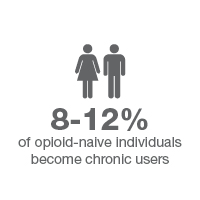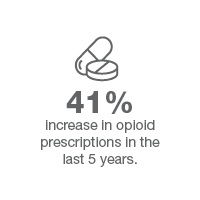Decreasing the amount of opioids prescribed
Opioids are often overprescribed for acute pain and the CDC has stated there isn’t enough evidence indicating “opioids improve chronic pain, function and quality of life. Moreover, long-term use of opioid pain relievers for chronic pain can be associated with abuse and overdose…”

Priority Health has taken the following first steps to reduce opioid use by our members*
- We’re reducing the number of short-acting opioids for acute pain to a 15-day fill;
- We’re reducing the number of long-acting opioids for chronic pain to a 30-day fill;
- We’re reducing the maximum dose to 120 MEqD (morphine equivalent dose) per day – the threshold recommended by HEDIS, a tool used by more than 90 percent of America’s health plans to measure performance; and
- We’re reducing the number of members receiving prescriptions from multiple doctors.
*Members in palliative care or hospice and those with cancer are exempt.
Unfortunately, between 8-12 percent of opioid-naïve sufferers—or those who do not receive opioids on a daily basis but as pain relief for common medical and dental surgeries—become habitual users of the drugs.
This is shown in the more than 40 percent increase in opioid prescriptions over the last few years. And yet, Americans aren’t reporting they are in less pain—a proof-point that there are better ways to control pain than with opioids.
If you or a family member has concerns about opioid dependency, or substance overuse or misuse, call 800.673.8043.
